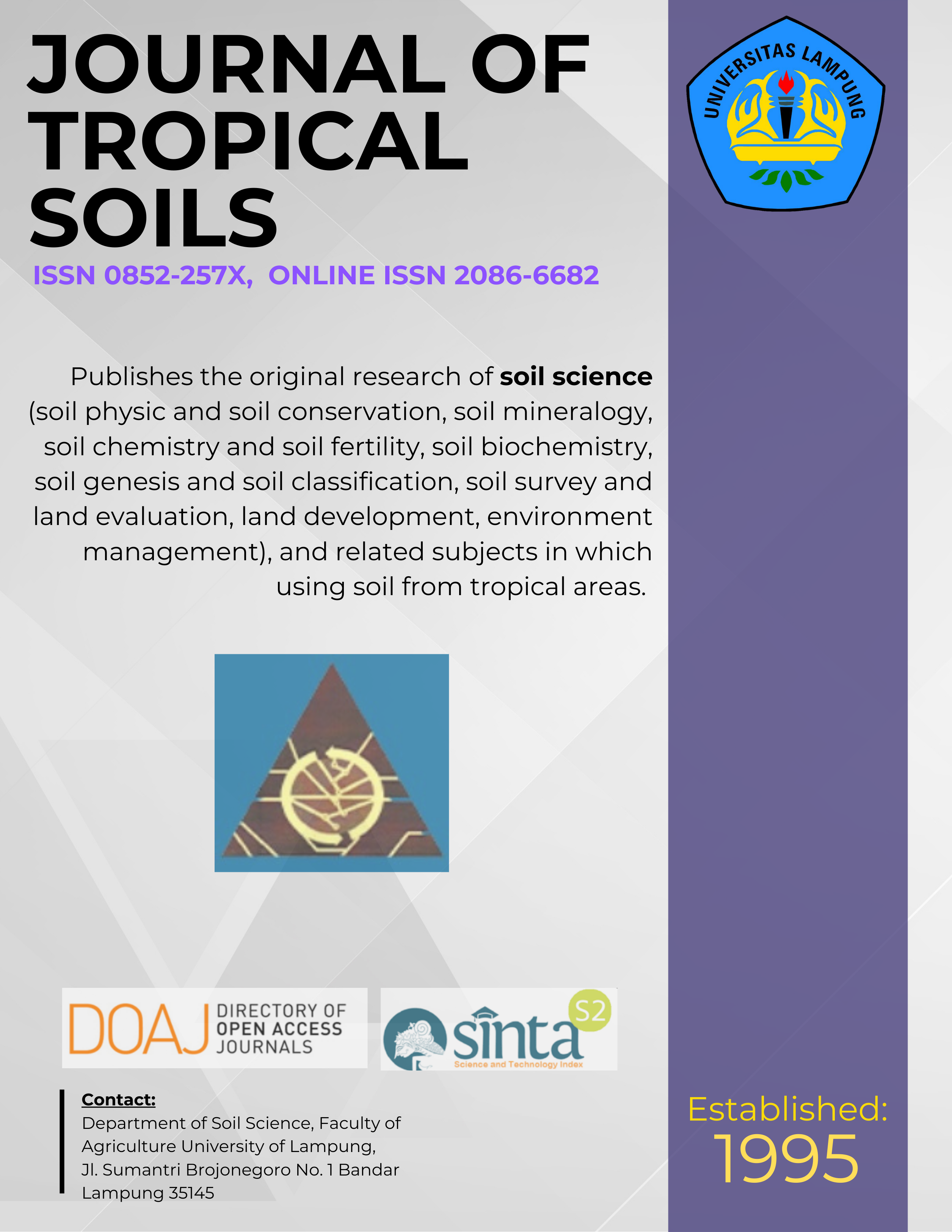Greenhouse Gas Emissions from Peat Soils Cultivated to Rice Field, Oil Palm and Vegetable
Main Article Content
Abstract
Presently, about 20% of oil palm (Elaeis guineensis Jacq) fields in Indonesia are on peat soil, in addition to that other
area of peat soil has been conventionally used for rice field and vegetables. To elucidate the global warming
potentials of peat soils cultivated to oil palm, vegetable or rice field, field experiment has been carried out in South
Kalimantan. Air samples were taken from rice field, oil palm and vegetable fields in weekly basis for six month period
and analyzed for concentrations of N2O, CH4 and CO2. The global warming potentials (GWP) of the three gases were
calculated by multiplying the emission of each gas with their respective mole warming potential. This step was
followed by the addition of the three gases’ GWP to have the total GWP. The results showed that the emissions of
greenhouse gases from peat soils changed seasonally and varied with the crops cultivated. Oil palm has resulted
the highest GWP, mostly contributed by N2O. There was no statistical different in total GWP of paddy and
vegetable fields. The annual N2O emission from oil palm field was 4,582 g N ha-1 yr-1. Water, nutrients and organic
matter managements are among the potential techniques to minimize gas emissions from oil palm field which need
field trials.
Downloads
Article Details
Issue
Section
License for Authors
Authors who publish with this journal agree to the following terms:
- Authors retain copyright and grant the journal right of first publication with the work simultaneously licensed under a Creative Commons Attribution License that allows others to share the work with an acknowledgement of the work's authorship and initial publication in this journal.
- Authors are able to enter into separate, additional contractual arrangements for the non-exclusive distribution of the journal's published version of the work (e.g., post it to an institutional repository or publish it in a book), with an acknowledgement of its initial publication in this journal.
- Authors are permitted and encouraged to post their work online (e.g., in institutional repositories or on their website) prior to and during the submission process, as it can lead to productive exchanges, as well as earlier and greater citation of published work (See The Effect of Open Access).
License for Regular Users
Other regular users who want to cite, distribute, remix, tweak, and build upon author’s works, even for commercial purposes, should acknowledge the work’s authorship and initial publication in this journal, licensed under a Creative Commons Attribution License.

